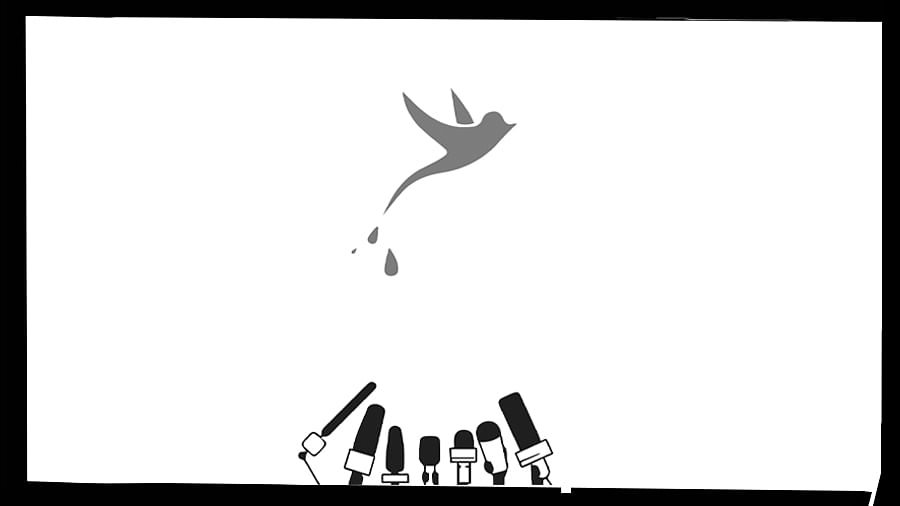
In 2024, India’s ranking in the World Press Freedom Index, according to Reporters Without Borders (RSF), dropped to 159 out of 180 countries, down from 140 in 2014. During the same period, Pakistan improved its ranking from 158 to 152.
This decline reflects the current state of press freedom in India and highlights global perceptions. With a few exceptions, the media has aligned with the government’s narrative, often remaining silent on critical issues and avoiding challenging questions. The recent apologies of an interview the Prime Minister granted to select journalists were more in the nature of long monologues than interviews. They were shallow and failed to address pressing concerns, thus reinforcing the derogatory label of “Godi Media.”
Drawing a parallel to the mythological tale of Samudra Manthan, where the churning of the ocean produced both poison (vish) and life-giving nectar (amrit), the churn of the last decade in Indian politics has similarly yielded both detrimental and exemplary-courageous journalism. Despite numerous challenges, some journalists in the digital news, with a vast following running into crores, have risked harassment and potential threats by asking tough questions and reporting on critical issues. It is thanks to them that there has been a semblance of balance in shaping the opinions of our citizens, including perhaps influencing the outcome of the 2024 parliamentary elections.
The current ranking of Indian media mirrors the lesser democracies, sliding to the lowest quartile globally, and the trend has persisted without interruption in the last decade. Particularly damaging has been the pervasive threat of relentless harassment and threats to life, coupled with the state’s collaboration with crony capitalists to buy out media outlets that refuse to toe the line.
Over the past decade, the corporate ownership of media houses in India has become increasingly prevalent, leading to significant concerns about the integrity and independence of journalism. Major corporations, often with close ties to political power, have acquired prominent media outlets. One of the most notable examples is the acquisition of NDTV by the Adani Group, a conglomerate with extensive business interests and political connections. Similarly, the Reliance Group, led by Mukesh Ambani, has acquired stakes in various media outlets, including Network18, which operates numerous television channels and online platforms.
These corporate takeovers have raised alarms about the potential for media manipulation and the suppression of dissenting voices. What is more, such channels also get the lion’s share of government advertisement revenues. This emerging trend has resulted in a media landscape where business interests and political agendas can overshadow journalistic objectivity and the public’s right to unbiased information.
The systemic problems associated with media ownership unfortunately extend beyond corporate control. Media houses without substantial financial backing struggle to sustain operations independently. This financial vulnerability can make them susceptible to political pressure, compromising their editorial independence. Moreover, without adequate resources, these outlets may lack the capacity to produce high-quality, investigative journalism, which is essential for holding the powers to account.
If we are to be seen as a vibrant democracy and improve our ratings on press freedom, we need to introduce a slew of reforms. Expecting this from the current dispensation may well be an oxymoron since it calls for the political will for a free press in the first place. But here is our wish list nonetheless:
For starters, we need to rationalise regulatory frameworks to set ownership limits in media companies so as to prevent excessive control; regulate or enforce rules that prevent entities from owning multiple types of media (e.g., print, broadcast, and digital) to ensure diversity in media voices and prevent consolidation of media muscle in one entity; and promote transparency requirements by calling for full disclosure of media ownership structures.
We also need to promote public broadcasting by increasing funding for broadcasters like Doordarshan and All India Radio, ensuring at the same time that they operate independently of government influence. Perhaps the Supreme Court can itself suo motu advocate legal reforms like defamation laws or whistle-blower protection. It should also step in to guarantee legal protection for editorial independence within public and widely held broadcasting services, backed by strengthening self-regulatory bodies like the Press Council of India (PCI). This would further help foster exemplary ethical standards and enforce codes of conduct.
A combination of appropriate tax incentives, grants, and subsidies, as well as making funds available through measures such as taxing large media conglomerates, would be a possible approach to encouraging growth, sustainability, and capacity building in non-profit, community media, and independent investigative journalism.
As a long-term measure to create pull for ‘free’ media, we need to enhance media literacy not only by educating citizens on how to critically evaluate news sources and recognise biases, but also by back-integrating this education into school curricula to equip the next generation with critical thinking skills related to media consumption.
The above measures need to be fused with global partnerships and collaboration so as to improve overall standards of journalism and build Free Press India as a brand. We should actively participate in freedom of press rankings and improve our own monitoring by the likes of PCI, or News Broadcasting Standards Authority, to improve our image dimension score (or say brand salience) in this area.
In summary, while corporate ownership of media poses its own set of challenges, the solution lies in a balanced approach that ensures the financial viability of journalism without compromising editorial independence. By implementing regulatory reforms, supporting public and independent media, and promoting media literacy, India can strive to create a more resilient and democratic media landscape. Failure to do so would only bring our press freedom rankings to the level of the banana republics of the world.
We hope that the golden era of fearless journalism will make inroads into the mainstream media once again. After all, as the famous broadcaster Walter Cronkite once said, “Freedom of the press is not just important to democracy; it is democracy.”
(Vinit Taneja is a management consultant; V Raghunathan is an author-academician)